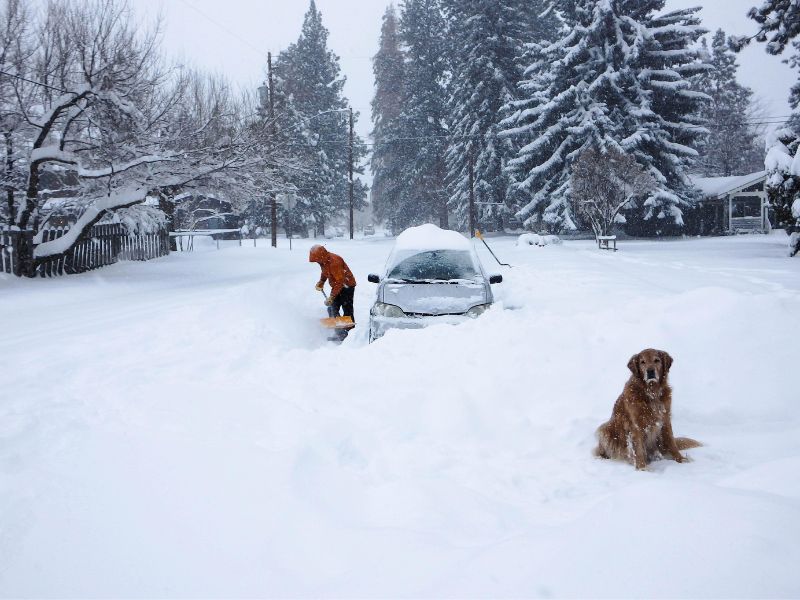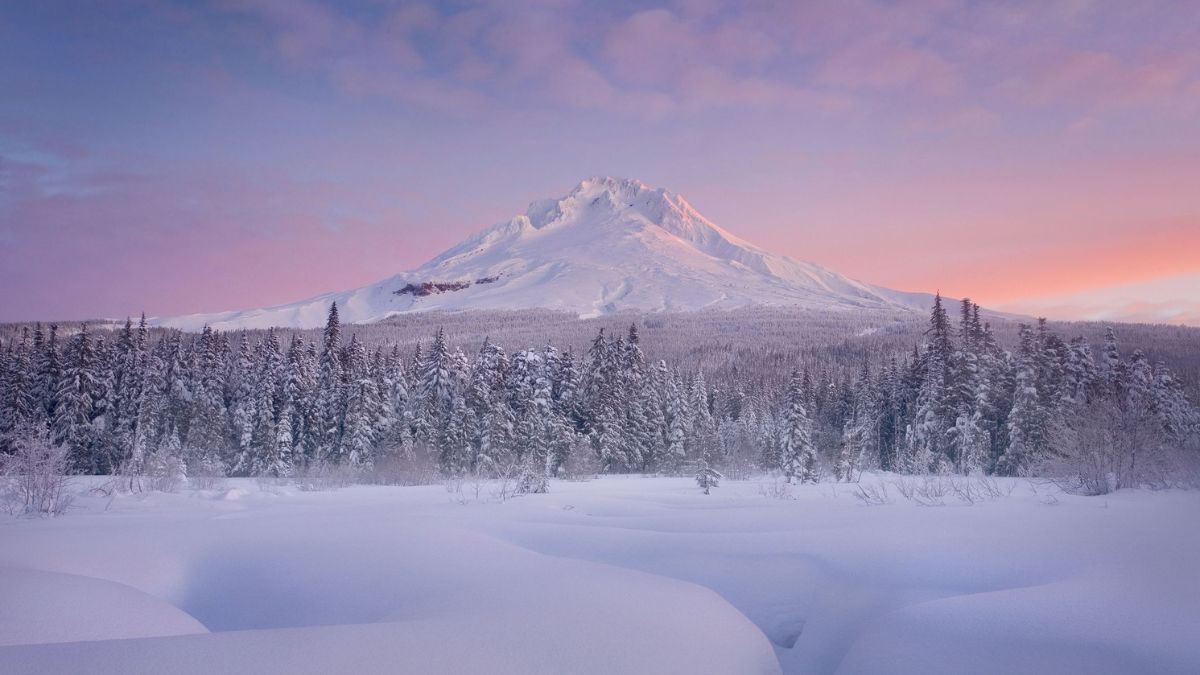Yes, it does snow in Oregon. Oregon is a state located in the Pacific Northwest region of the United States, and it experiences snowfall in winter. The amount and frequency of snowfall can vary depending on the region and elevation within the state.
It is important to note that snowfall patterns can vary from year to year, and specific weather events can influence the amount of snowfall in a given winter season. Climate change can also have long-term effects on snowfall patterns, although the specific impacts on Oregon’s snowfall are still being studied.
Oregon is a picturesque state in the Pacific Northwest region of the United States. It is known for its diverse landscapes, from rugged coastlines to lush forests and towering mountains. With such geographical variety, one might wonder if snowfall is common in this region.

In this article, we will explore the question, “Does it snow in Oregon?” and delve into the various factors that influence the state’s snowfall patterns.
Location Overview
Oregon is bordered by Washington to the north, California to the south, Nevada to the southeast, and Idaho to the east. The Pacific Ocean lies to the west of the state, providing Oregon with a stunning coastline.
Geographically, Oregon is known for its diverse landscapes. The western part of the state is characterized by lush forests, including the famous temperate rainforests of the Coast Range and the majestic Douglas firs of the Willamette Valley.
This region also features fertile farmlands, meandering rivers, and numerous waterfalls. The cities of Portland, Eugene, and Salem are located in this area.
The Cascade Range runs through the center of the state, forming a spine of mountains. Mount Hood, Oregon’s highest peak at over 11,000 feet, is a prominent landmark in this range. The Cascades are known for their volcanic peaks, alpine lakes, and dense forests.
A high desert landscape characterizes Eastern Oregon. It features vast open spaces, arid conditions, and unique geological formations. Eastern Oregon also has several small cities and towns, such as Bend, Pendleton, and Ontario, offering distinct charm and recreational opportunities.
Geography and Climate of Oregon
The climate in Oregon varies depending on the region. The western part of the state has a temperate marine climate, with mild, wet winters and warm, dry summers. The inland areas and valleys experience a more continental climate, with hotter summers and colder winters.
Eastern Oregon has a semi-arid climate with hot summers and cold winters; higher elevations tend to have colder temperatures and more snowfall. It is important to note that snowfall patterns can vary significantly from year to year.
Some winters in Oregon may bring heavy snowstorms and prolonged periods of snow cover, while others might be relatively mild with minimal snow accumulation. Climate change also has the potential to impact snowfall patterns over time.
Oregon’s geographical diversity plays a significant role in determining its snowfall patterns. The state is divided into several distinct regions, each with its own climate and weather patterns.
The western part of Oregon is influenced by the temperate marine climate of the Pacific Ocean, while a semi-arid climate characterizes the eastern portion. These regional differences create varying conditions for snowfall.
Historical Snowfall Record
The historical snowfall records of Oregon vary depending on the region and specific locations within the state. Here are some notable examples of historical snowfall events in Oregon:
- Mount Hood
Mount Hood is a popular winter destination in Oregon. The city receives an average of over 400 inches of snowfall annually. In the winter of 1950-1951, Mount Hood set a record with a total snowfall accumulation of 883 inches, the highest recorded snowfall in the state’s history.
- Crater Lake
Crater Lake National Park in southern Oregon also experiences substantial snowfall. The park, known for its stunningly deep lake, typically receives heavy snowfall during winter. In February 1969, a record-breaking snowfall occurred at Crater Lake, totaling 178 inches in a single month.
- Bend
Bend is a city located in central Oregon that often receives notable snowfall during the winter. In December 1919, Bend experienced a significant snowstorm that brought approximately 30 inches of snow in just a few days.
- Portland
While snowfall is less common in Portland due to its milder climate and proximity to the Pacific Ocean, the city has experienced notable snowstorms. In December 2008, a severe winter storm blanketed Portland with several inches of snow, causing transportation disruptions and widespread impacts.
It is important to note that these are just a few examples of historical snowfall events in Oregon, and snowfall patterns can vary significantly from year to year.
Winter Season & Snowfall Pattern
Oregon experiences a diverse climate in different regions of the state. Here are brief information on the different regions of the state:
- Mountainous Regions and Snowfall
One of the key factors contributing to snowfall in Oregon is its mountainous terrain. The state is home to the Cascade Range, which stretches from northern California through Oregon and into Washington.
This mountain range includes prominent peaks like Mount Hood, Mount Jefferson, and the Three Sisters. These mountains, with their high elevations, often experience heavy snowfall during the winter months.
Mount Hood, the tallest peak in Oregon, is a popular winter destination for skiing and snowboarding enthusiasts. Its elevation of over 11,000 feet ensures a reliable snowpack throughout the winter season.
- Inland and Valley Regions
While the mountainous regions of Oregon receive substantial snowfall, the lower-lying inland areas and valleys experience less snow. Cities such as Portland, Eugene, and Salem, located in the Willamette Valley, typically see only a few snow events each year.
The moderating influence of the Pacific Ocean and the lower elevations in these regions lead to milder winter temperatures and less frequent snowfall.
- Eastern Oregon and High Desert
Eastern Oregon presents a different scenario. The region’s high desert landscape and higher elevations contribute to increased snowfall compared to the western part of the state. Cities like Bend, Pendleton, and La Grande often experience more frequent snow events and higher snow accumulations.
Locations to Enjoy Snow
Oregon offers several locations where you can enjoy snow-related activities. Here are some notable places to experience the beauty of winter in Oregon:
- Mount Hood
Mount Hood is a premier winter destination with abundant snowfall. The mountain offers opportunities for skiing, snowboarding, snowshoeing, and snowmobiling. Timberline Lodge and Ski Area, Mt. Hood Meadows, and SkiBowl are popular resorts where you can enjoy winter sports.
- Crater Lake National Park
Crater Lake National Park, located in southern Oregon, transforms into a winter wonderland during the colder months. The park offers cross-country skiing and snowshoeing trails, providing breathtaking views of the pristine Crater Lake and surrounding landscapes.
- Bend
Situated in central Oregon, Bend offers numerous winter activities. The area boasts several ski resorts, including Mt. Bachelor, known for its excellent skiing and snowboarding conditions. You can also explore the nearby Deschutes National Forest, which offers various winter opportunities.
- Sisters
The charming town of Sisters, nestled in the foothills of the Cascade Range, becomes a picturesque winter escape. Nearby areas like Hoodoo Ski Area and Santiam Pass offer skiing, snowboarding, and tubing options.
The town itself is known for its festive atmosphere during the annual Sisters WinterFest, featuring ice sculptures and other winter-themed activities.
- Anthony Lakes
Located in the northeastern part of the state, Anthony Lakes is a lesser-known gem for winter enthusiasts. The area offers skiing, snowboarding, and snowshoeing in a serene and uncrowded setting, surrounded by stunning mountain vistas.
- Willamette Pass
Willamette Pass, located in the central Cascade Range, offers a family-friendly winter experience. The ski resort provides skiing and snowboarding opportunities and tubing and snowshoeing options for all skill levels.
These are just a few examples of the many locations in Oregon where you can enjoy the beauty of snow and engage in a variety of winter activities.
Conclusion
The amount of snowfall in Oregon varies depending on the region and elevation. The state’s mountainous areas receive significant snowfall, providing ample opportunities for winter sports and recreation.
The lower-lying inland regions and valleys experience less snow, while the high desert areas of eastern Oregon often see more frequent snow events. When exploring Oregon’s winter climate, it is essential to consider these geographical factors and their influence on snowfall patterns.
